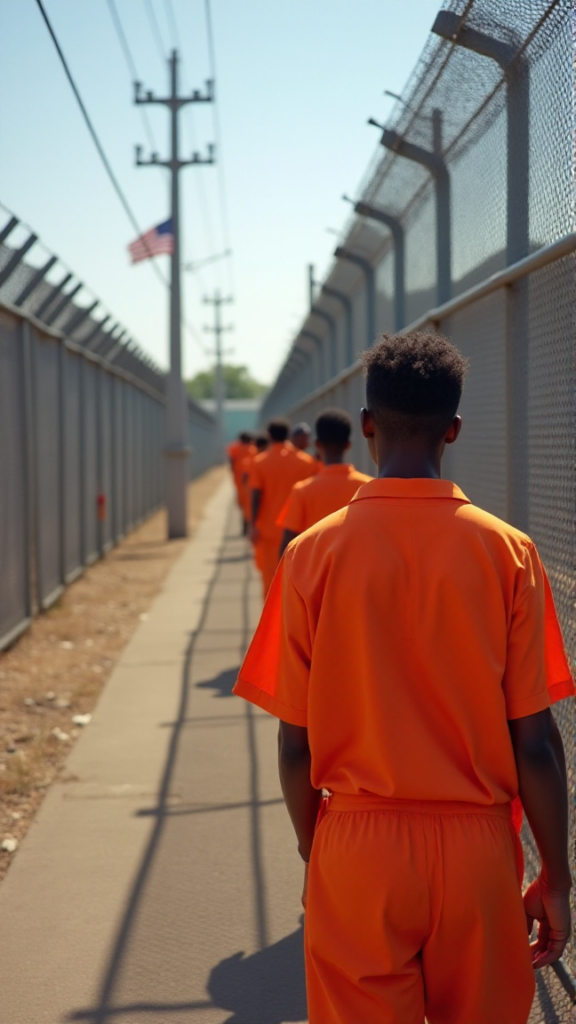Introduction
Detention centers in the United States have become a critical part of the nation’s immigration enforcement strategy. However, these facilities, designed to hold undocumented immigrants and asylum seekers, have drawn severe criticism from human rights organizations, legal experts, and former detainees. While intended to process migrants efficiently and ensure compliance with immigration laws, these centers have been widely criticized for poor conditions, inhumane treatment, and a lack of transparency.
Key Takeaways
- U.S. detention centers face allegations of overcrowding and human rights abuses.
- Poor medical care and inadequate access to legal counsel are rampant.
- Family separations and trauma are common in these facilities.
- Calls for reform emphasize alternatives to detention programs.
- Transparency and oversight remain major challenges.
Inside the Detention Centers: What Goes Wrong?
- Overcrowding and Inhumane Conditions
Detention centers often operate over capacity, with facilities housing far more individuals than they were designed to accommodate. Reports of migrants being forced to sleep on concrete floors, share inadequate bathroom facilities, and endure extreme temperatures are alarmingly common.
In some cases, children are separated from their families and placed in fenced enclosures, leading many to label these facilities as “cages.” Such conditions exacerbate the mental and physical toll on detainees, many of whom are fleeing violence and persecution in their home countries. - Inadequate Medical Care
Medical neglect is another pressing issue. Detainees often lack access to proper healthcare, even for serious conditions. Cases of preventable deaths due to untreated illnesses, suicide, or complications from mental health disorders have been reported. The COVID-19 pandemic further highlighted these deficiencies, with outbreaks sweeping through facilities ill-equipped to handle public health crises. - Barriers to Legal Representation
Securing legal representation is a significant challenge for detainees. Many centers are located in remote areas, far from attorneys who specialize in immigration law. Language barriers and limited access to legal resources further compound this issue, leaving detainees to navigate complex legal processes on their own. Without proper representation, their chances of successfully claiming asylum or appealing deportation orders drop dramatically. - Psychological and Emotional Trauma
Detention centers are particularly harmful to vulnerable populations, including children, survivors of violence, and individuals with mental health disorders. Prolonged detention often leads to depression, anxiety, and post-traumatic stress disorder. For children, the trauma of separation from parents and exposure to harsh environments can have long-lasting consequences. - Lack of Transparency and Oversight
One of the most troubling aspects of U.S. detention centers is the lack of accountability. Many facilities are privately operated, making it difficult for the public and even government officials to monitor conditions. Inspections and audits often fail to address systemic issues, allowing substandard conditions to persist.
Why Detention Centers Are Not the Solution
Critics argue that detention centers are not only inhumane but also inefficient and costly. The U.S. government spends billions annually on immigration detention, yet there are viable alternatives. Programs such as community-based supervision, electronic monitoring, and case management systems have shown higher compliance rates at a fraction of the cost. These approaches respect human rights while maintaining immigration law enforcement.
Opinion: A Call for Reform
The current state of detention centers represents a moral and humanitarian crisis. As a nation that prides itself on freedom and justice, the U.S. must reevaluate its approach to immigration enforcement. Detention should be a last resort, reserved for cases where individuals pose a genuine threat to public safety. Instead, the government should prioritize humane alternatives that uphold the dignity and rights of migrants.
Conclusion
Detention centers in the U.S. highlight the urgent need for immigration reform. Poor conditions, legal barriers, and the psychological toll on detainees make these facilities a symbol of systemic failure. Addressing these issues is not just a matter of policy—it is a matter of humanity.
#DetentionCenters #ImmigrationReform #HumanRights
Sources










